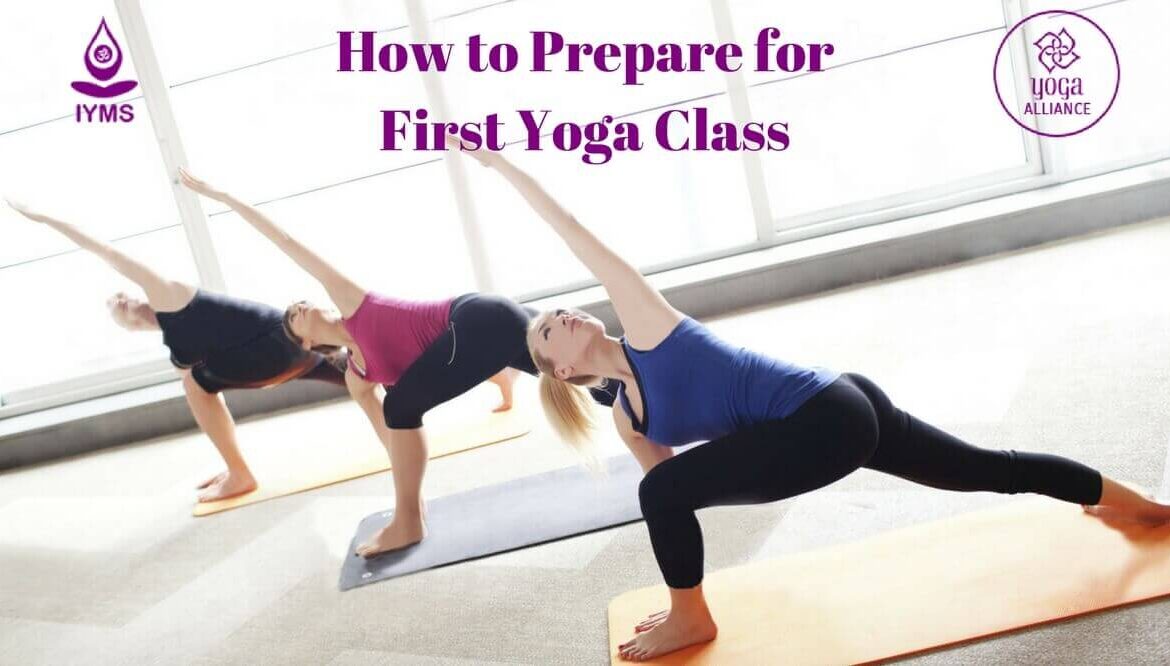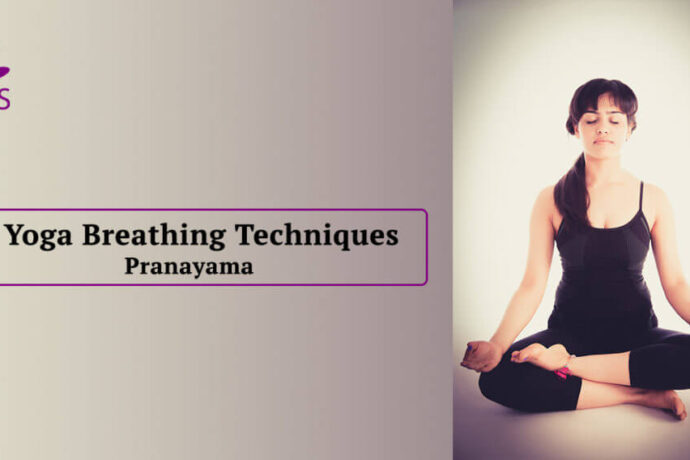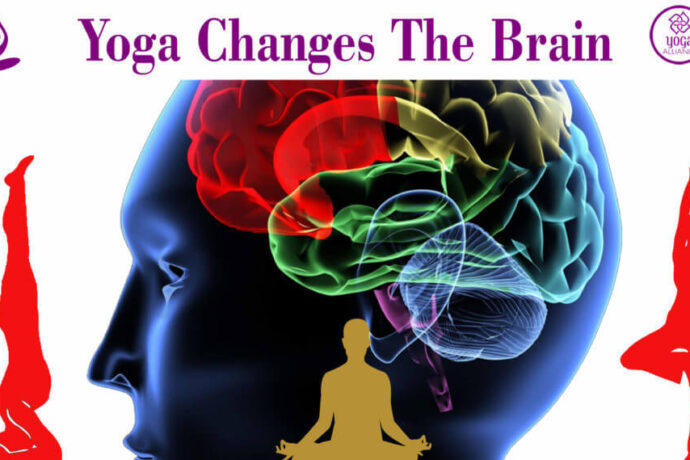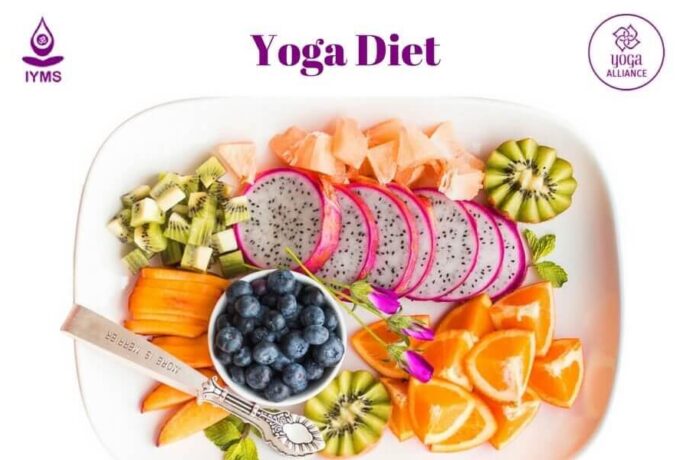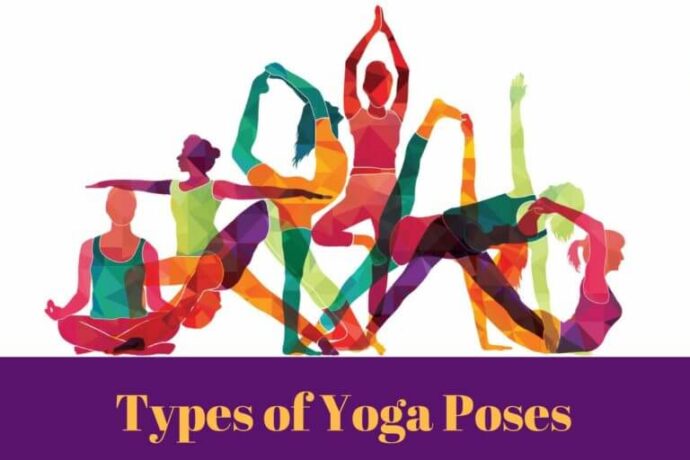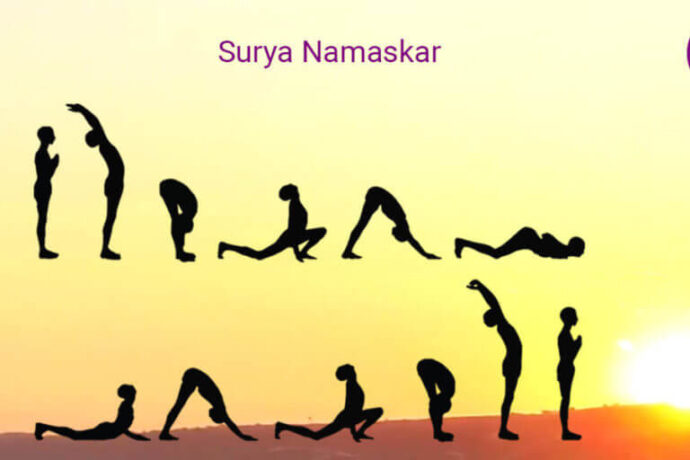If you’ve zeroed in on yoga as your choice of exercise, or perhaps your road to finding calmness, you’ve come to the right place to learn what to expect from yoga, and how you can prepare for your first yoga class.
Now that you’ve decided to go for it, you must have several questions about what to wear, whether you should eat before class, whether you will be able to cope, etc.
Fear not, all your questions will be answered in the time it takes you to read this article.
Here’s what you need to know about “how to prepare yourself for first yoga class”.
Which Type of Yoga is Best For You?
Yoga can be done by anyone and everyone, regardless of age or physical fitness. While each yoga style has its own benefits, it is, however, important to choose the style that would be best for you.
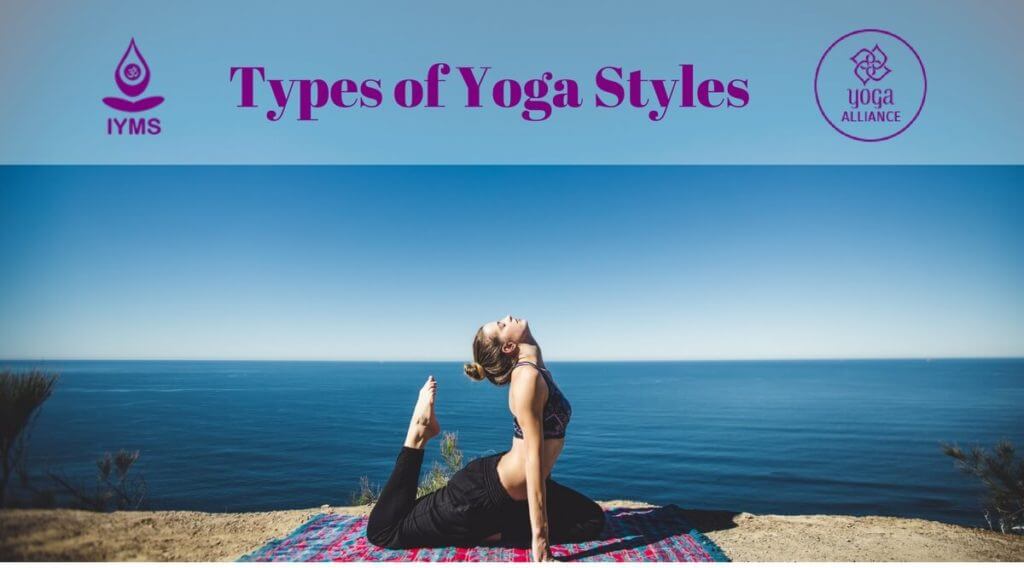
So how would you know which style suits you? Try by asking yourself some questions. What need are you seeking to address? Are you looking for a way to exercise your body? Is it to complement another type of exercise? Are you hoping that yoga will help you spiritually? Are you looking for inner peace through yoga?
You can read our article to learn the pros and cons of different types of yoga styles.
For instance,
Hatha Yoga style is slow, introduces you to basic postures. This style is advisable for beginners for their first yoga class.
In comparison, Vinyasa Yoga is for exercise junkies: you are constantly moving, no breaks until the end. Plus, the routine changes every day.
Ashtanga Yoga could be the answer to your problems if you are particularly looking at physical fitness and improving the alignment of your body.
If it’s a spiritual need that you seek to fulfill, perhaps Kundalini Yoga is your thing. If you need healing, and time to recover from burnout, then restorative yoga could be good for you.
Based on what you have learned, you could choose a style which is best suited to you, or the best one for you at this point of time. You can always change it depending on your needs.
Now, find a class near your house or place of work, so that it is easy to reach. You could also check if they have separate classes for beginners. Most classes last an hour, some might even take about 90 minutes.
Yoga Gear
Preparing for yoga class doesn’t really require anything fancy. Unlike many sports which require hefty initial investment, it’s usually quite budget-friendly.
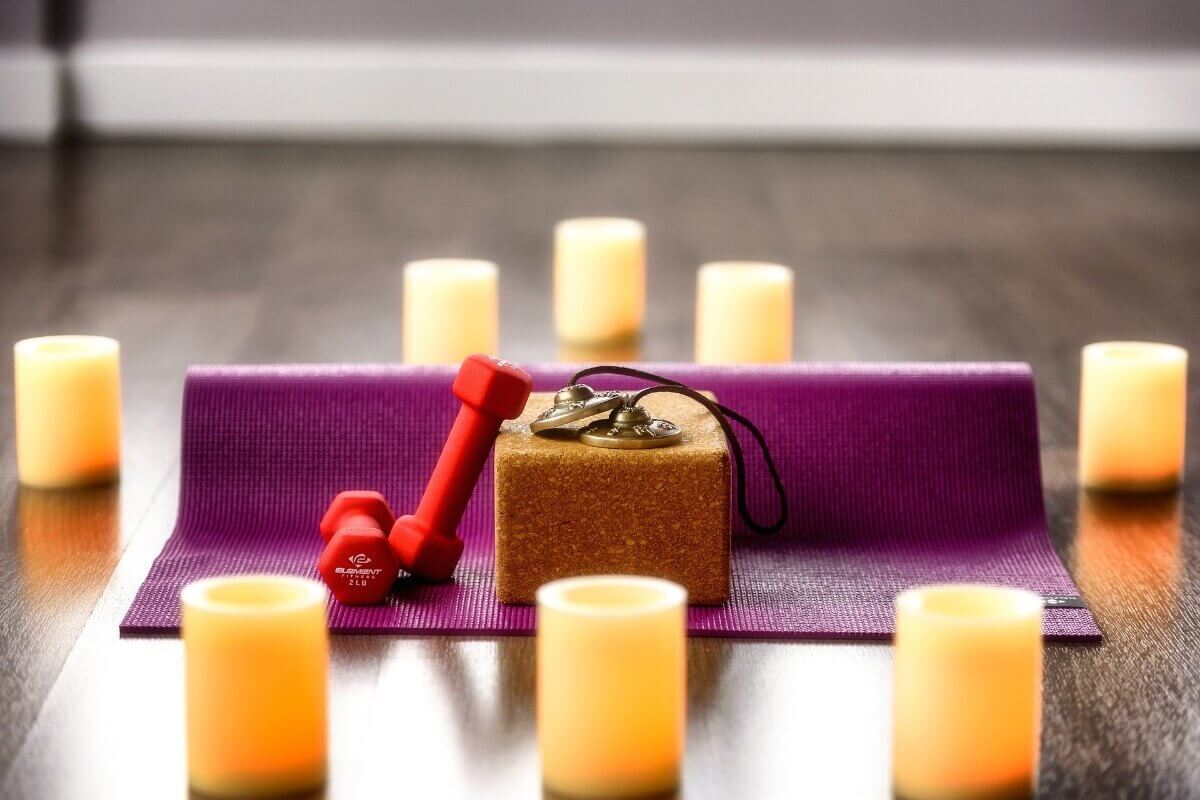
Preparing for yoga class doesn’t really require anything fancy. Unlike many sports which require hefty initial investment, it is usually quite budget-friendly.
First, you need a mat. Most yoga studios will provide mats to students who don’t have theirs. But since people sweat on the mat, it may not be a very good idea to use mats that everyone uses. Yoga mats are affordable, even though some brands will sell it to you at sky high prices.
Make sure your mat has a good grip so that it stays put, and you don’t slip while you’re trying to do a warrior pose.
You might keep a water bottle and a towel handy.
Blocks, bolsters, straps and other props are usually available with yoga studios, so you don’t need to buy them separately.
What to Wear to Your First Yoga Class
Next in line are clothes. Yoga involves all kinds of bending and stretching, so you need something that will allow your body to move freely.
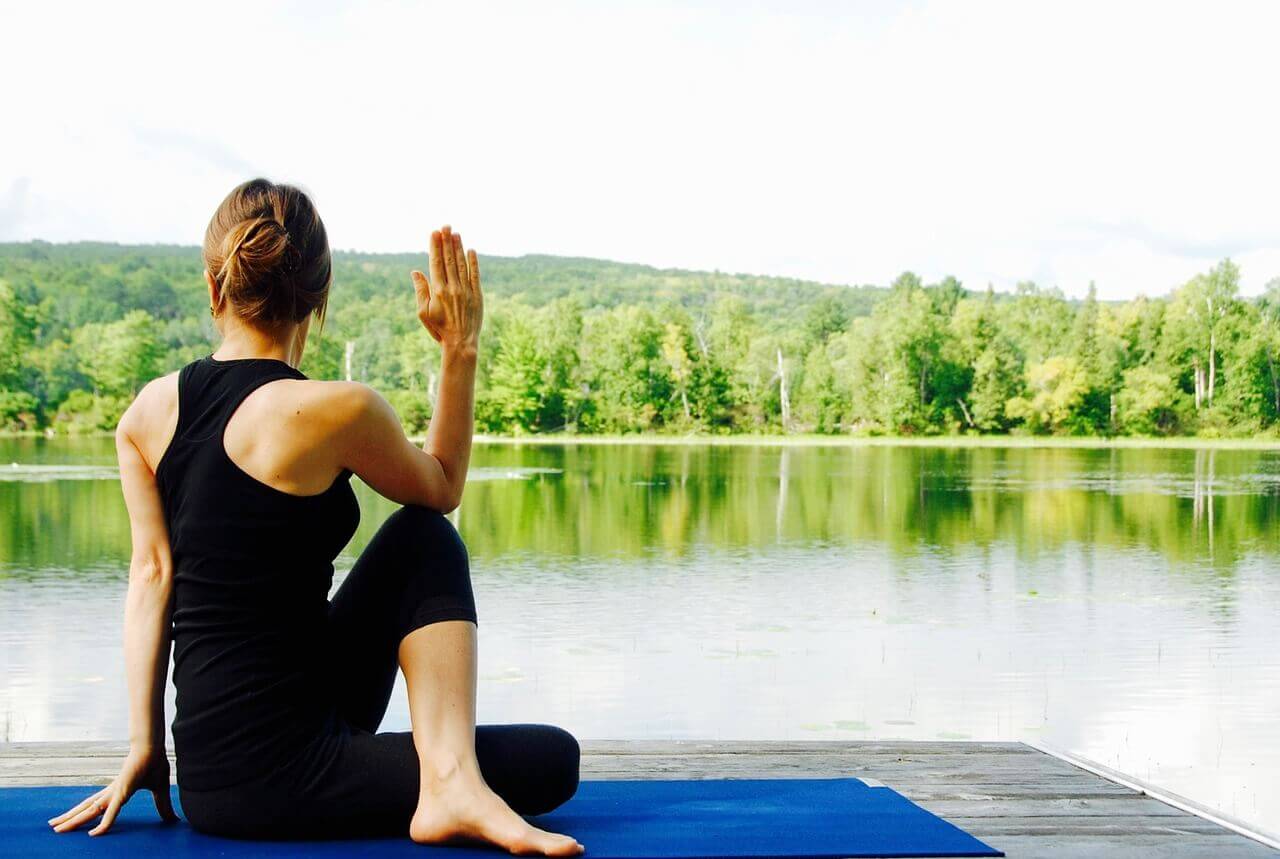
All the bending and stretching can make your clothes go in all directions unless you wear something appropriate. Ideally, form-fitting clothes (yoga pants, tights, close-fitting shorts and T-shirts) are the best.
Sports bras are better than regular bras, as the latter move around, or could have underwires.
You could keep a change of clothes if you’re not going straight home after the class.
What do you wear to yoga on your feet?
If you’re wondering “what to wear on your feet during yoga?”, the answer is: NOTHING.
Yoga is practiced on barefoot. There is no need to wear either shoes or socks. You might want to wash your feet before the class if you’ve been wearing closed shoes all day.
What not to wear to yoga?
Wearing loose or ill-fitting clothes can affect your concentration. For instance, wearing loose T-shirts or pants can be irritating while doing a shoulder stand.
A loose T-shirt will fall over your chest, exposing your stomach. You would be more occupied in straightening your clothes than in maintaining the asana.
Food
You’re not getting anywhere if you don’t have the energy to lift yourself off your mat.

Doing yoga on an empty stomach isn’t a very good idea. But neither is doing it on a full stomach. Your body needs to focus on what you’re telling it to do, and not on digesting a sumptuous meal.
What you need, is something in between. It’s usually a good idea to have a light snack an hour or two before you begin your class. Keep it simple. Eat fruits or a salad, or drink a smoothie.
After the class, you could also munch on something light to keep your stomach happy until you get your next meal.
Water
The one of the most important tips for first yoga class is to Drink Lots of Water.

Most doctors will advise you to drink about two liters a day, regardless of your level of exercise. If you keep yourself well-hydrated throughout the day, you don’t need to focus so much on drinking water before the class.
If you’re the type who gets engrossed in work and forget to drink enough water, make sure that you are well hydrated before the class starts. Start drinking a lot of water at least two hours before the class starts so that your body can absorb it well.
Water is especially important if you’ve decided to opt for hot yoga classes. Since you’ll be sweating it out in an artificially heated room, you will need to make sure your body is well-hydrated.
There are no water breaks during a yoga class. But unless you’re doing a Vinyasa class, you can always stop for a moment to get some water.
After class too, drink enough water. Keep yourself well hydrated.
Arrive Early, Stay Until the End
Coming early to class gives you a good opportunity to talk to your instructor and ask any questions you might have, especially if you require tips for your first yoga class.
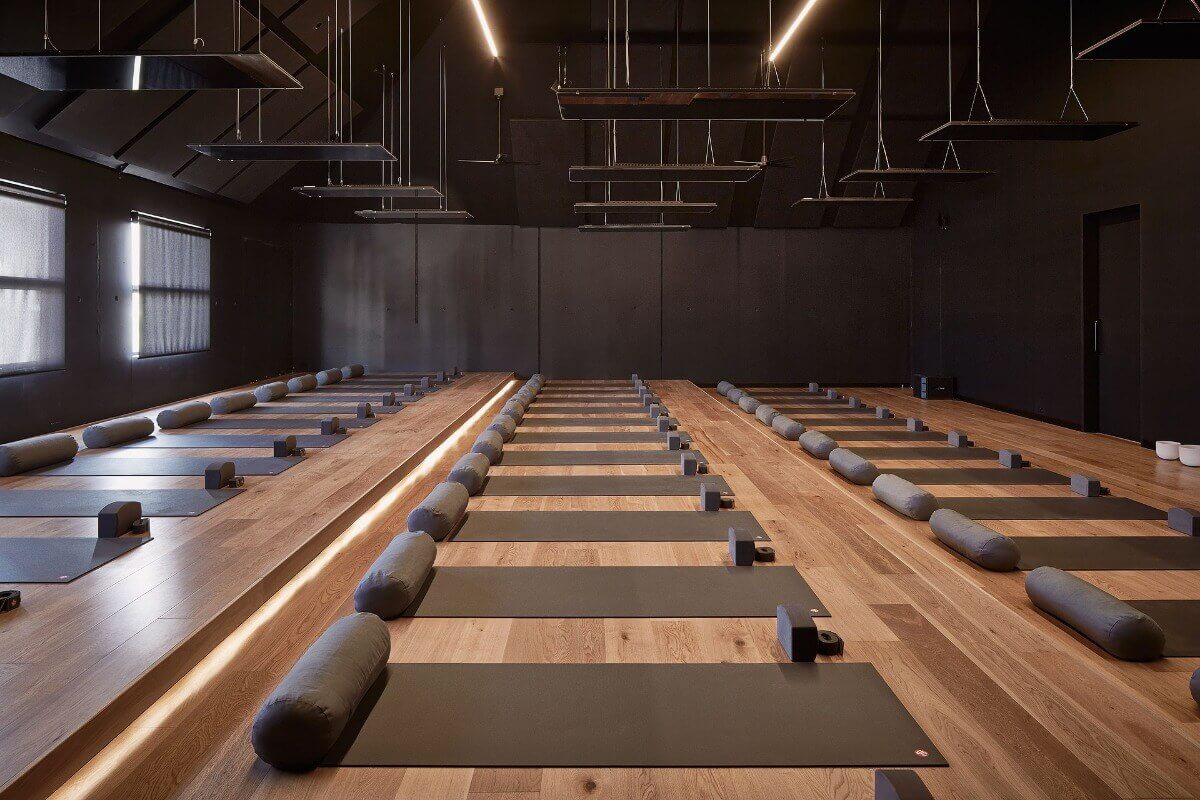
If you’re early, you have enough time to set up your mat, and keep your towel and water bottle next to you before class starts.
Also, you avoid disrupting the class once it is underway. It’s just plain annoying to have someone pottering around making a noise trying to set up when they’re late.
Getting to your class 10 minutes early will help build a routine for your body. As time passes, those 10 minutes will help get your body into yoga mode.
Follow Teacher’s Instructions During Your Yoga Class
In your first yoga class, you’re going to be blank. That’s OK.
It might take you a while to understand your teacher’s instructions well enough to execute them. Remember you are here to learn. Don’t get discouraged or flustered if you can’t keep up with the rest of the class.
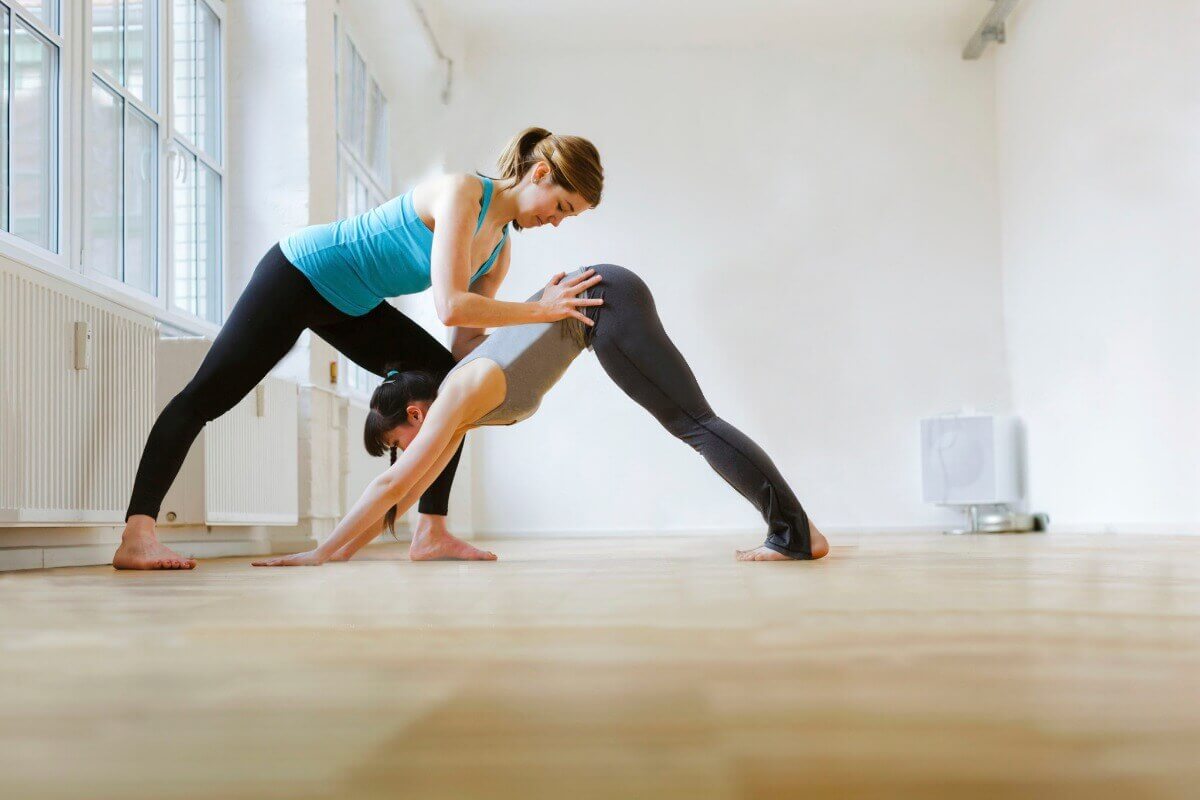
It helps if your mat is behind someone who knows how to do the yoga poses correctly. That way, you can see what others are doing, and imitate them.
Most yoga teachers know where beginners are likely to slip up, which alignment can go wrong. Teachers often walk around the class, especially with beginners, telling them how to bend or stretch, and adjusting postures and alignments.
If you are not comfortable with them touching you to correct your posture, let them know in advance.
If you have questions, you can always talk to your instructor at the end of a class or the beginning of the next one. You could also talk to your instructor before your first yoga class so that you can discuss your concerns.
Taking Breaks
Taking breaks during yoga classes can depend on the type of style you’ve opted for.
As a beginner, taking up Vinyasa or Bikram isn’t a very good idea, so let’s assume that your yoga class is slow-paced.
Generally, yoga instructors do not haul you up for laziness if you take a short break. However, this does not mean you can walk out and take a phone call and come back.
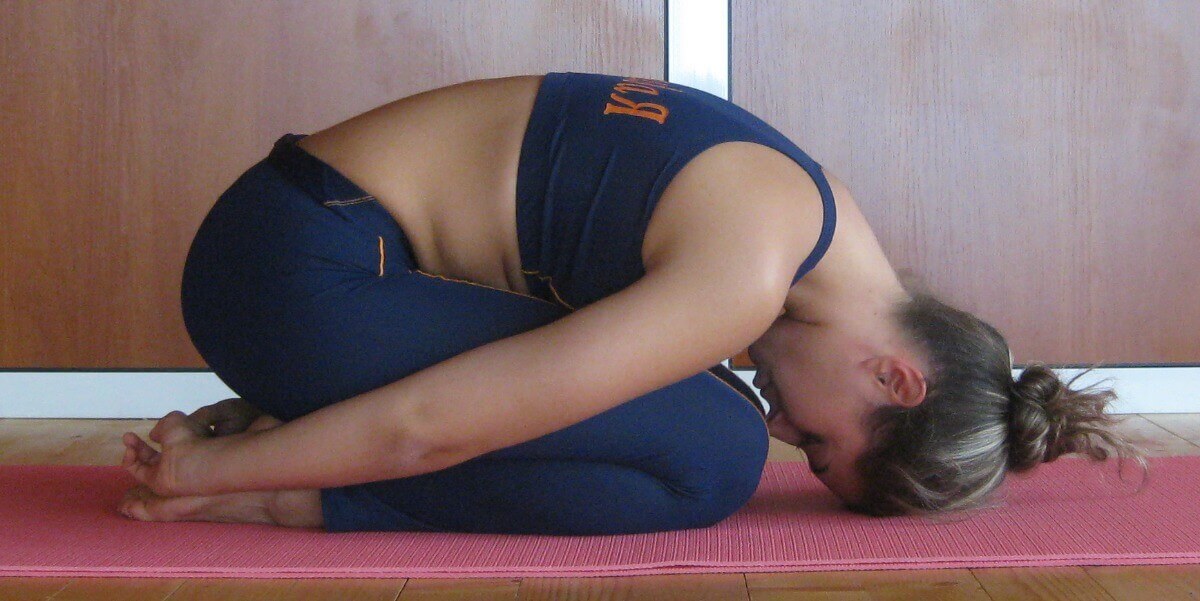
If the class has become too strenuous for you, or you’re simply not feeling yourself, take a few minutes to do the Child’s pose.
Kneel on the mat, toes together and knees apart. Sit on your heels, then lean forward and place your forehead on the mat while your hands are clasped behind your heels.
You can be in this pose as long as you need to feel rested enough to join the rest of the class.
Don’t Hold Your Breath!
Breathing is very important in yoga practice. Initially, you might have trouble coordinating your breath with your movement, but that is perfectly all right. No need to get all worked up about it.

Just keep following your teacher’s instructions and move accordingly. Don’t forget to breathe while you are struggling to achieve a particular asana, even if it’s not exactly how you are supposed to be doing it. In time, you will learn to coordinate your breath with your movement.
Some asanas require the Ujjayi form of breathing. You constrict your throat a bit so that when you inhale and exhale, your breath is loud.
Music, Meditation and Chanting
Most classes involve some amount of chanting or music. Some studios may have more of it than others, and it may also depend on the yoga style you have chosen.
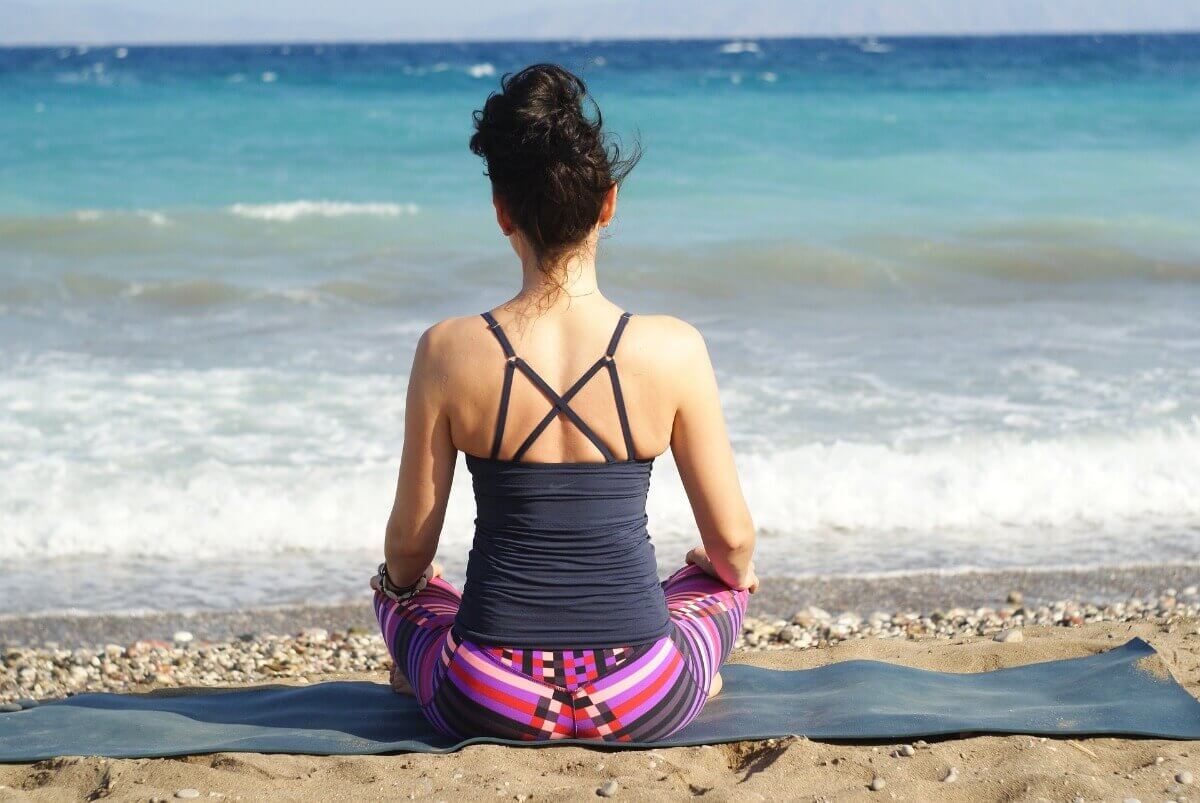
Some classes might begin or end with an “Om” chant. This chant is believed to energize you and activate different chakras.
At the end of your class your yoga teacher might play some music while directing you to relax in the Shavasana or Corpse pose. This is important. Don’t walk out, thinking that the class is over is you’re not doing anything vigorous.
Meditation could also be a part of your yoga routine. Often, a yoga teacher will instruct students to get into the Lotus pose or Padmasana to meditate for a few minutes before winding up the class.
Routine
Yoga isn’t going to be much good to you if it doesn’t become a part of your routine. You need to figure out how often you will practice yoga. And then stick to it. The mere decision of doing yoga every day is half the challenge.
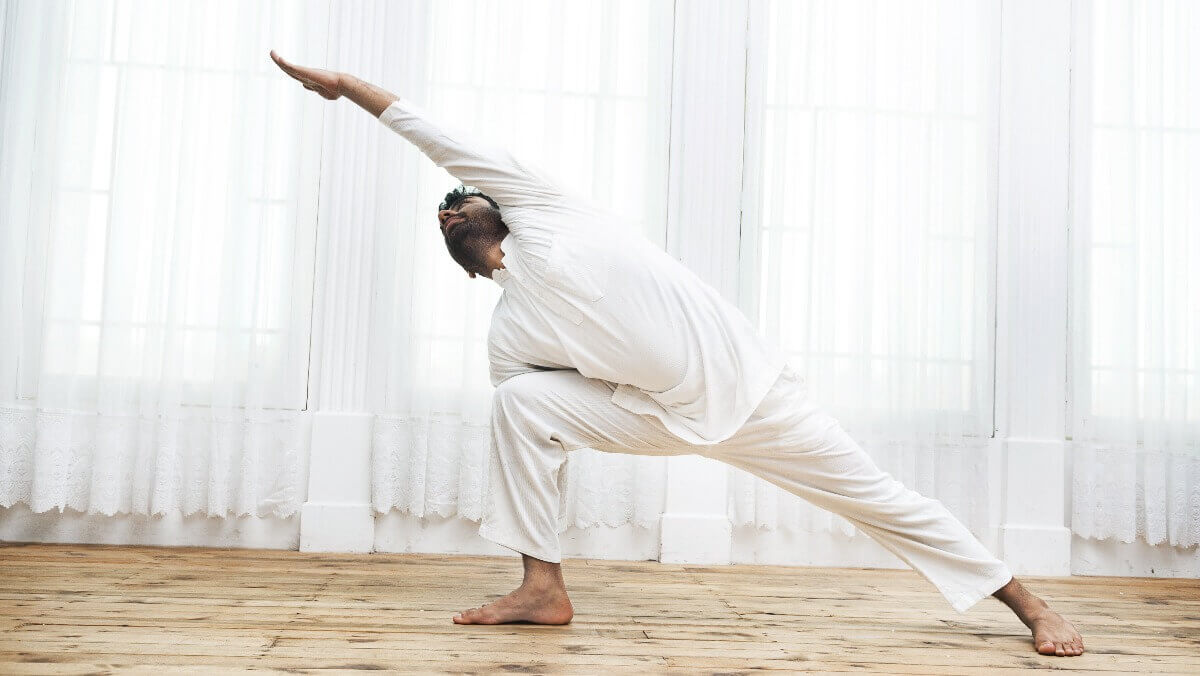
Initially, as you struggle to bend, stretch, twist and balance, you will discover muscles you never thought you had. And yes, there will be some soreness.
You might not be able to touch your toes with your fingers on the first day, or the second day, or even the third.
Don’t push your body beyond what it can do. Let it progress at its own pace. All you have to do is to get back on your mat every day. And that takes effort.
Experience the Moment
Yoga isn’t about competition, about doing better than anybody. While you’re doing yoga, it’s just you and your mat that exist.
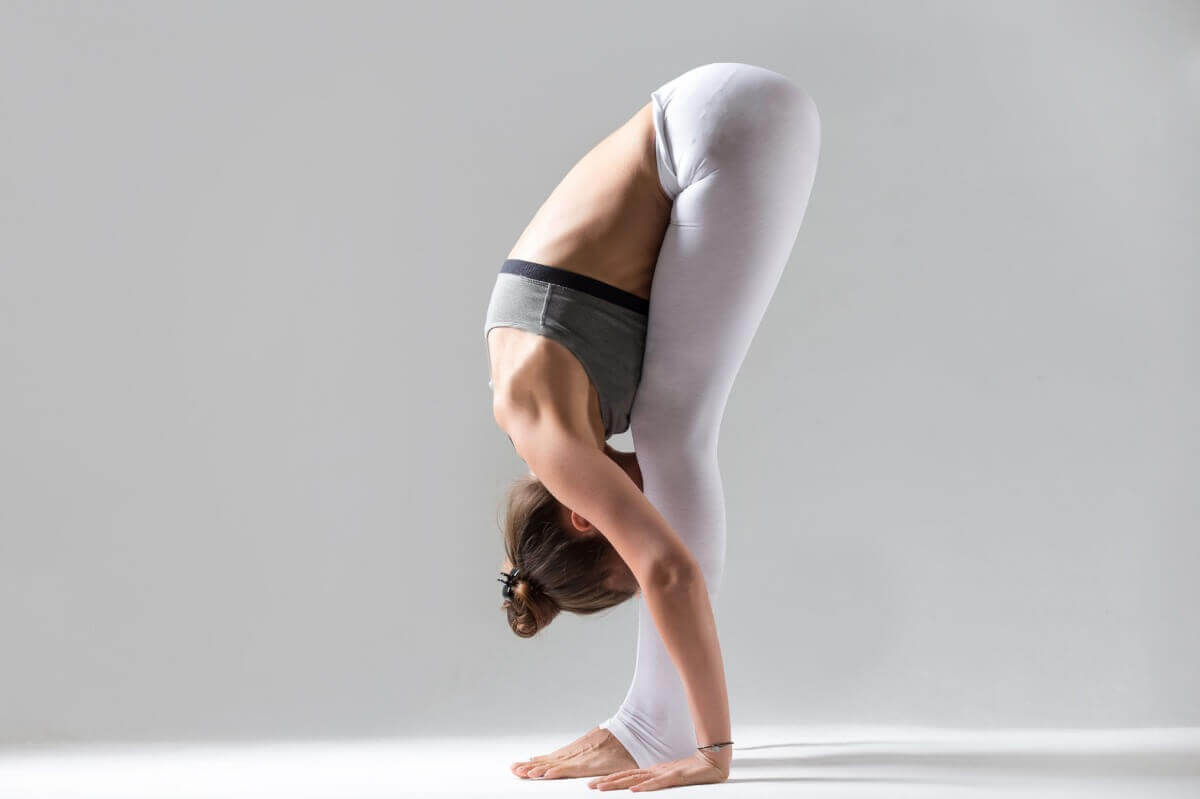
With yoga, the journey is as important as the destination.
While trying to do an asana, focus on the moment. Pay attention to the way your hips are just a little more flexible than yesterday, the stretch you feel on your back, or the way the back of your thighs stretch when you try to touch your toes.
Never mind if you’re fingertips are still several inches away from the floor. You can touch your toes tomorrow. Or maybe never. But that’s ok.
Conclusion
You don’t exercise yoga for punishment, you do it to nurture your mind and body. Knowing beforehand what to expect from first yoga class and being prepared goes a long way in enjoying your yoga class experience. So enjoy yoga, and learn what it has to teach you.
